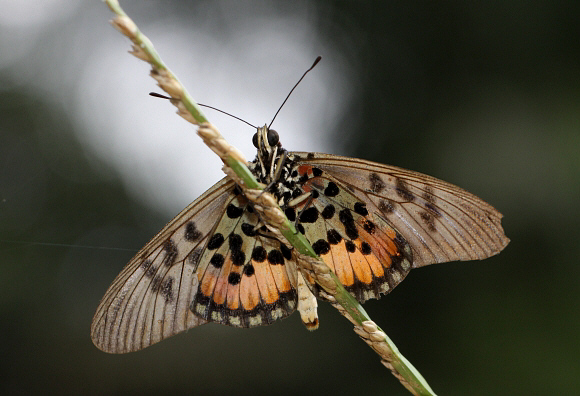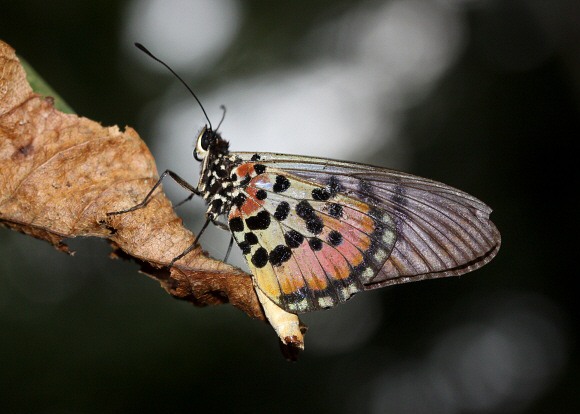
Introduction
There are 228 Acraea species, of which 223 are Afrotropical in distribution. The majority are found in the forests and savannahs of East Africa, while about 60 are found in West Africa. Beyond Africa a further 5 species occur in the Oriental region, and another is found in Australia / New Guinea. In the neotropical region there are 50 additional species, but these are normally placed in the genera Actinote, Altinote and Abananote due to differences in venation and genitalia.
All Acraea species have elongate forewings and rounded hindwings. The wings are thinly scaled and in many species are semi-transparent. The scales wear off very easily so that insects more than 4 or 5 days old have a glassy or greasy appearance. The majority of species have a predominantly brownish or greyish ground colour, marked with bands or patches of red or orange. The basal area of the underside hindwings of most species is marked with a pattern of small black spots.
Acraea egina is distributed from Gambia to Sudan, and south to Transvaal.

Habitats
This species is found mainly in dry forests and savannah habitats, but can also be found in clearings and large open glades in rainforest.
Lifecycle
The eggs are laid in clusters of up to 20 on leaves of Adenia ( Passifloraceae ). The larva is whitish, ringed with black on each segment, and has black tubercules. The pupa is pinkish-brown.
Adult behaviour
The butterfly has an elegant flight, weaving gently as it glides smoothly and effortlessly a metre or two above the ground, propelling itself with casual shallow but rapid flicks of the wings.

